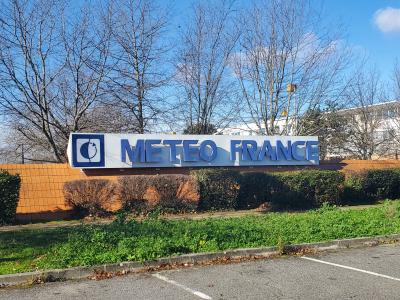Reflection from 6th Workshop on Coupling Technologies for Earth System Models
The 6th Workshop on Coupling Technologies for Earth System Models was held on January 18-20, 2023, in a hybrid format. The in-person meeting was on the campus of Meteo France in Toulouse, France. Meteo France is also the home to CERFACS, the main developer of the OASIS coupler used by many European climate models.
This unaffiliated workshop is held roughly every 2 years and organized by developers of most of the world’s climate model coupling systems. The workshop brings together both developers and users of coupling software to discuss the latest features and issues surrounding the construction of coupled models in climate and earth system modeling. This year’s meeting was co-organized by E3SM’s Robert Jacob and CERFAC’s Sophie Valcke. IS-ENES provided funding for refreshments and travel support for students to attend.
The workshop was attended in person by 32 scientists and 81 people registered to attend virtually. There were 2 days worth of talks spread out over 3 days and the talks were divided into 4 sessions. The first session focused on new developments in coupling technology. The second session was on new coupled systems and mathematical problems in coupling. The third session was on performance and the fourth was on additional coupling technologies.
The Model Coupling Toolkit (MCT), originally developed by DOE in the first SciDAC, was mentioned often in the first session. Sophie Valcke gave an update on OASIS3-MCT version 5. It is currently used by 67 modeling groups worldwide to assemble over 80 coupled applications. Notably, it is used by 5 of the 7 European models that participated in CMIP6. It’s in a very stable state and is expected to be used for another 5 years. Dr. Valcke presented results from a study of different mapping weight calculation tools that followed protocols established in the CANGA project. ESMF, YAC (used by the German ICON model), and XIOS (originally an I/O system but now being used for coupling by IPSL) all compared well in terms of map quality while SCRIP (the original coupler mapping weight generator developed by LANL’s Phil Jones) was sometimes worse and sometimes better, depending on the mesh combination.
Robert Jacob spoke about the latest developments in the E3SM coupler, cpl7/MCT, since the last workshop (held virtually in 2020). E3SM is now developing cpl7/MCT on its own, as CESM moved to the CMEPS coupler. E3SM has made improvements to the tri-grid coupling and added new coupling pathways between the land and river and between the river and ocean. Support for new components (WaveWatch III and GCAM) has also been added. For models that use a GPU, such as EAMxx, the driver can now provide exclusive access to a CPU task and its memory while the other CPU-only components run on their own tasks. It was announced that the in-development MOAB-based coupler can now run a fully coupled “Watercycle case.” The mapping weights are all calculated online and MOAB does all of the data transfer between components.
Dan Rosen gave an update on ESMF. It now has a generic driver application called “ESMX” that can help users build an executable from NUOPC-compliant components that use Cmake. ESMF has also continued to adopt MOAB for its internal mesh representation.
Mariana Vertenstein spoke about the new CMEPS coupler in CESM. It now allows more flexible mixing of threaded and un-thread components. Support for multiple ice sheets was added as well as support for calculating fluxes on an “exchange grid”. CESM is using the online mapping capability of CMEPS to move more initial data creation online at runtime including fractions and land initial conditions.
The question of GPU use in couplers frequently came up. The consensus is that there is not enough computational work in a coupler to justify using a GPU even at a very high resolution. It was also agreed that the interpolation operation is the most logical place to try GPU acceleration. All expect to see more examples of coupled models running on heterogenous systems with GPUs at the next workshop.
Presentations are available on the conference web site. You can also watch videos of each session.

